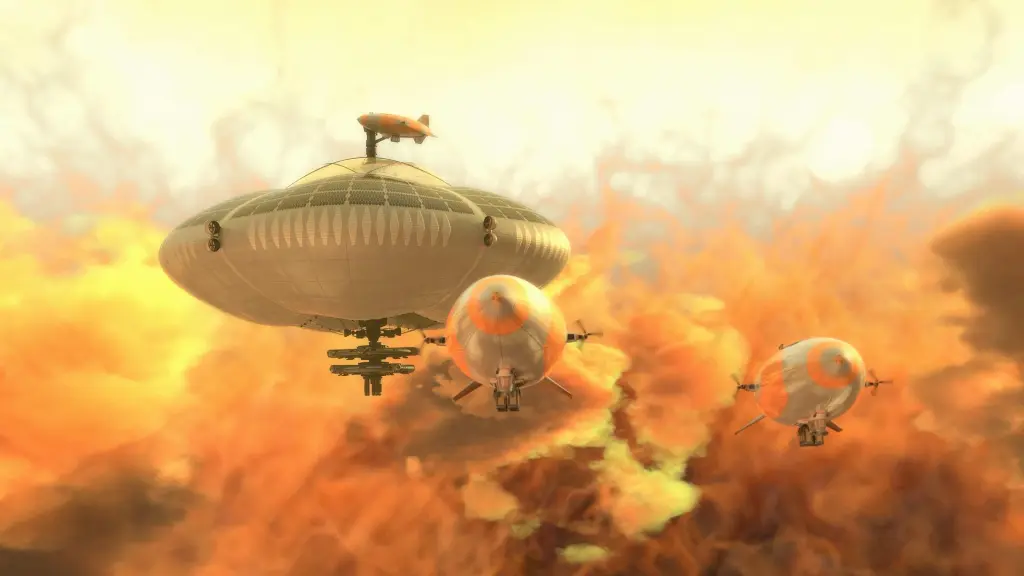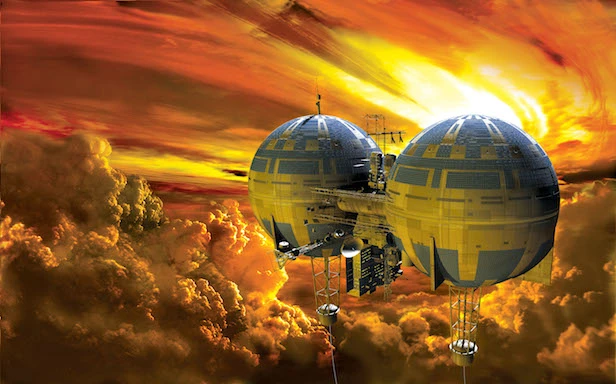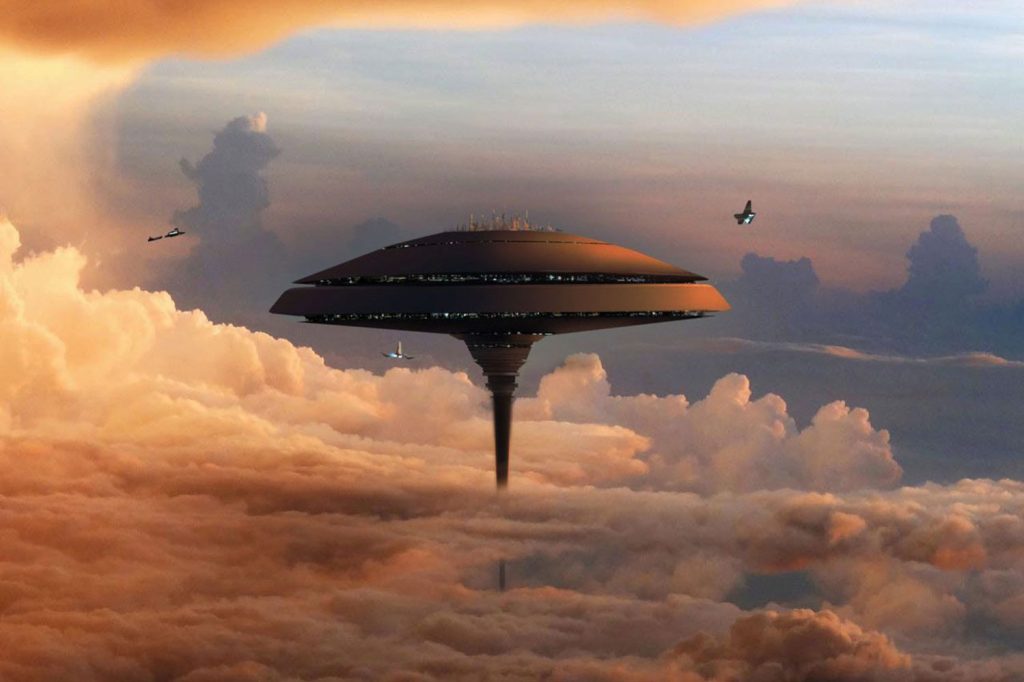When we talk about colonizing Venus and other planets, Mars usually steals the spotlight. It’s cold, yes, but relatively close and familiar. But what if we told you that Venus—our hellish twin—is actually a better option for human colonization in some ways?
No, we’re not suggesting building cities on the surface of a planet where the pressure is equivalent to being 1 km under Earth’s ocean, and the temperature is hot enough to melt lead. We’re talking about building floating cities in Venus’ upper atmosphere.
At spaceyv, we’re always curious about where science fiction meets real science. And the concept of colonizing Venus through cloud-based habitats may sound like fantasy—but it’s grounded in serious scientific proposals.
Why Colonizing Venus ? Isn’t It a Death Trap?
Let’s be clear: Venus’ surface is extremely inhospitable.
-
Surface temperature: ~475°C (900°F)
-
Atmospheric pressure: ~92 times Earth’s
-
Atmosphere: 96% carbon dioxide
-
Clouds: Sulfuric acid droplets
So, yes—landing on Venus isn’t feasible with today’s tech. In fact, the longest any probe has survived on Venus’ surface is 127 minutes (Venera 13, USSR, 1982).
But here’s the twist: about 50–55 kilometers above the surface, conditions are surprisingly Earth-like.

The “Sweet Spot” in Venus’ Atmosphere
At this altitude:
-
Temperatures hover around 20–30°C (68–86°F)
-
Pressure is about 1 atmosphere (like Earth’s surface)
-
There’s abundant solar energy—more than Mars gets
-
CO₂-rich air offers a lifting gas opportunity (we’ll explain!)
This “sweet spot” in the Venusian clouds is what makes floating colonies possible.
How Would Floating Cities Work?
NASA’s Langley Research Center has proposed a mission concept called HAVOC (High Altitude Venus Operational Concept), involving solar-powered airships and floating habitats.
☁️ Buoyancy in Venus’ Atmosphere
Here’s the science magic: On Venus, a mixture of oxygen and nitrogen (Earth air) is lighter than Venus’ carbon dioxide atmosphere.
That means an air-filled structure could float naturally, like a helium balloon does on Earth!
🏙️ Concept of a Cloud City
Imagine this:
-
Massive blimp-like habitats, floating ~50 km above Venus
-
Powered by solar panels, which are more effective here than on Mars
-
Shielded from sulfuric acid by Teflon or fluoropolymer coatings
-
Equipped with greenhouses, life support systems, and research labs
A fully-operational city could host scientists, robots, and explorers for long-term missions.

Benefits of Colonizing Venus Over Mars
While Mars has captured the imagination of the public (thanks, Elon Musk!), Venus has a few key advantages:
| Feature | Mars | Venus (Upper Atmosphere) |
|---|---|---|
| Gravity | 0.38g | 0.9g (closer to Earth) |
| Temperature | −60°C average | 20–30°C at 55 km |
| Atmospheric pressure | 0.006 atm | ~1 atm |
| Radiation shielding | Thin atmosphere | Excellent protection at cloud level |
| Solar power efficiency | Low | High due to proximity to Sun |
Floating in Venus’ sky might just be the most Earth-like environment in the entire solar system—if you stay at the right altitude.
Challenges of a Venus Cloud Colony
Of course, it’s not all smooth (acid) sailing:
☢️ Sulfuric Acid
Venus’ clouds contain high concentrations of sulfuric acid. Any colony would need to be built with corrosion-resistant materials and regularly maintained to prevent damage.
🚀 Transport and Descent
Reaching and maintaining altitude in Venus’ thick atmosphere requires precise engineering. We’d need aerobraking, heat shields, and robust balloons for descent and flotation.
🛠️ Building in Place
It’s unlikely we’d construct entire cities on Earth and fly them to Venus. Instead, modular habitats might be dropped in parts, inflated, and assembled mid-air.
🧪 Life Support
Keeping humans alive for extended periods means managing CO₂ scrubbing, oxygen production, food supply, and waste recycling, all while floating in a toxic sky.
Future Missions: Testing the Concept
Several mission concepts have been proposed to test Venus’ atmosphere and potentially pave the way for colonization:
-
NASA’s DAVINCI+: Scheduled to launch in the 2030s, this probe will descend through Venus’ atmosphere to study its chemical makeup.
-
ESA’s EnVision Mission: A European orbiter mission designed to study Venus from above, launching in the early 2030s.
-
Rocket Lab’s Private Venus Probe: Set to launch a small mission to Venus in the near future, showing that private space companies are interested too.
These missions could provide crucial data for eventual human presence.

What Would Life Be Like in a Venus Cloud Colony?
Living in a Venusian cloud city would be… surreal.
-
Residents would wake up to perpetual twilight—the thick cloud cover dims the sun.
-
Outside the protective hull: hissing winds, acidic mists, and a golden-orange haze.
-
Inside: Earth-like temperatures, artificial gravity (if rotating habitats are used), and controlled breathable air.
It’d be like living inside a futuristic blimp, hovering above a toxic sea of fire.
Why spaceyv Believes in Venusian Colonies
At spaceyv, we’re committed to exploring all frontiers of space science, not just the trendy ones. While Mars may get more headlines, Venus offers a fascinating alternative for early colonization, especially for scientific exploration and atmospheric research.
We believe that within this century, humanity might not just walk on Mars—but float on Venus.
Final Thoughts: Is Colonizing Venus Possible?
It’s not easy—but it’s not impossible either.
Colonizing Venus requires creative engineering, global collaboration, and pushing the limits of aerospace technology. But the science backs it up: floating cities in Venus’ clouds are one of the most feasible long-term colonization ideas we currently have.
So, next time someone talks about moving to Mars, ask them:
“What about floating in the clouds of Venus instead?”
The universe is vast—and Venus might be our second Earth, waiting in the skies above its molten surface.
Stay curious, stay cosmic.
Follow spaceyv for more bold science ideas and space mysteries!
References
NASA Langley’s HAVOC Mission Concept – NASA
Colonizing Venus with Floating Cities – Universe Today
The Case for Venus: Geoffrey Landis, NASA Glenn Research Center



